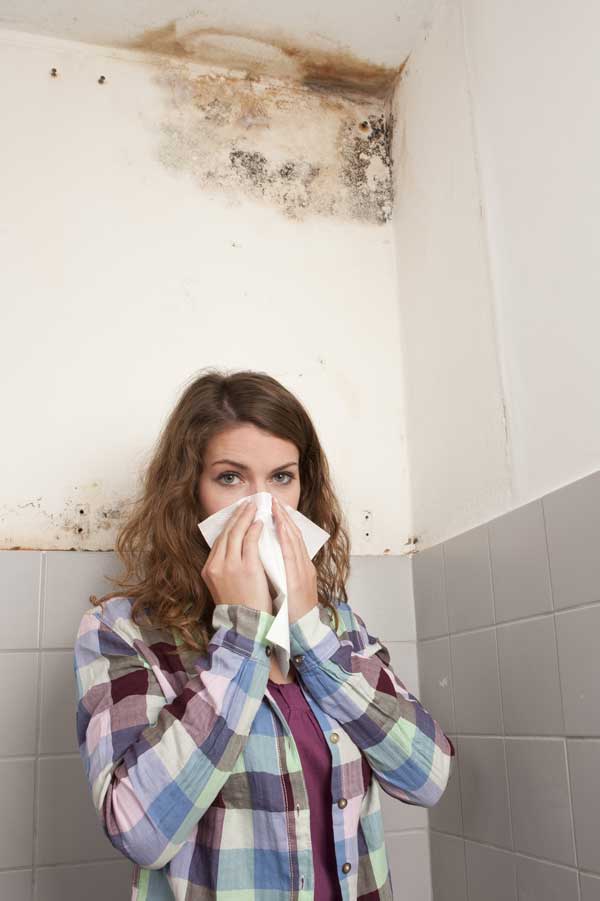The DIY Fix is reader supported. When you buy after clicking a link on our site, we may earn an affiliate commission.
 Often in cases of damp, it’s actually the damp smell in your house that first alerts you to the presence of damp Often before you’ve even noticed any visible signs, the musty and often very unpleasant aroma will begin to hit you when you enter the affected area. And, if it hasn’t happened already, once you start noticing the smell, you’ll soon spot damp patches or unsightly mold on the walls, ceiling or skirting boards, wherever the damp might be.
Often in cases of damp, it’s actually the damp smell in your house that first alerts you to the presence of damp Often before you’ve even noticed any visible signs, the musty and often very unpleasant aroma will begin to hit you when you enter the affected area. And, if it hasn’t happened already, once you start noticing the smell, you’ll soon spot damp patches or unsightly mold on the walls, ceiling or skirting boards, wherever the damp might be.
However you want to describe it, the damp smell is pretty horrible. If you’re unlucky the damp smell could be a symptom of much more serious issues within a property, such as penetrating damp or rising damp. More often than not though, the damp musty smell will be a symptom of condensation.
The smell of damp in a home is normally caused because of issues with heat and humidity. The key to solving the problem, longer term, is to reduce the level of moisture that is present in the home and to also try to improve the ventilation.
Getting rid of the damp smell – A short term solution
Before explaining a long term solution for getting rid of the damp smell in your home and guarding against it returning, let’s look at what can be done to remove the damp smell in the first place.
Obviously, the longer the smell has gone without any treatment or action, the longer it will take to remove it from a property. However, there are general steps to take that can be very useful.
If the damp appears to be coming from the walls, a good starting point will be to gently scrub any damp patches with some water and a cloth. Baking soda is extremely useful here. Just add a small amount to the water and it should make the task of scrubbing the mold away a fair bit easier. You might find that specialist mold removers are necessary in more serious cases.
Often you will find that the damp smell may have transferred itself to clothes or bed linen, or indeed any other fabrics in the home, such as curtains and furniture coverings. Washing these types of items on a normal cycle, after spraying them with white vinegar first, can be excellent for removing the mildew smell.
Baking soda also comes into its own again as a great way of clearing damp smells from ovens and fridges. Just leave a small cupful inside overnight.
Any mold that can be seen on kitchen appliances or grouting should be scrubbed thoroughly with a cloth and any conventional cleaning product.
Inspect any area in the home which smells damp and eliminate all sources. For example, old magazines or cardboard seems to attract the mildew smell and helps it linger. Once you have removed all such things from an area half the battle is won.
Anything that absorbs odors will be useful in getting rid of the damp smell in your home. Various sprays and products are available in most supermarkets that will be helpful. Other less conventional tactics can be employed. Charcoal briquettes, of the types you would use on a barbecue, are excellent absorbents of mildew. Placed in jars or containers, these will help to absorb moisture. Bizarrely, cat litter also does very much the same.
Getting rid of the damp smell – The long term solution
Better ventilation around the home is crucial. Often, this can be as straightforward as opening windows more frequently. In terms of expense, installing fans and vents is likely to be your most costly outlay – if the damp is caused by condensation. Ultimately, anything that reduces the moisture in the home (placing lids on pans during cooking, for example) and anything that ensures that the property is better ventilated will greatly reduce the likelihood of the damp smell returning to your house. Dehumidifiers are very useful at reducing moisture levels and keeping mildew away too.
Damp proof paint is useful, not just for covering over the ugly damp patches and mold spots, but for preventing it returning too – this will help to keep damp smells away as well.
Of course, it is important to bear in mind that the damp smells in your house might be because of more serious damp problems, such as penetrating damp and rising damp. In such cases, further damp treatment will be necessary. However, all the tips here for removing damp smells in the home, both in the short term and the long term, still apply.

